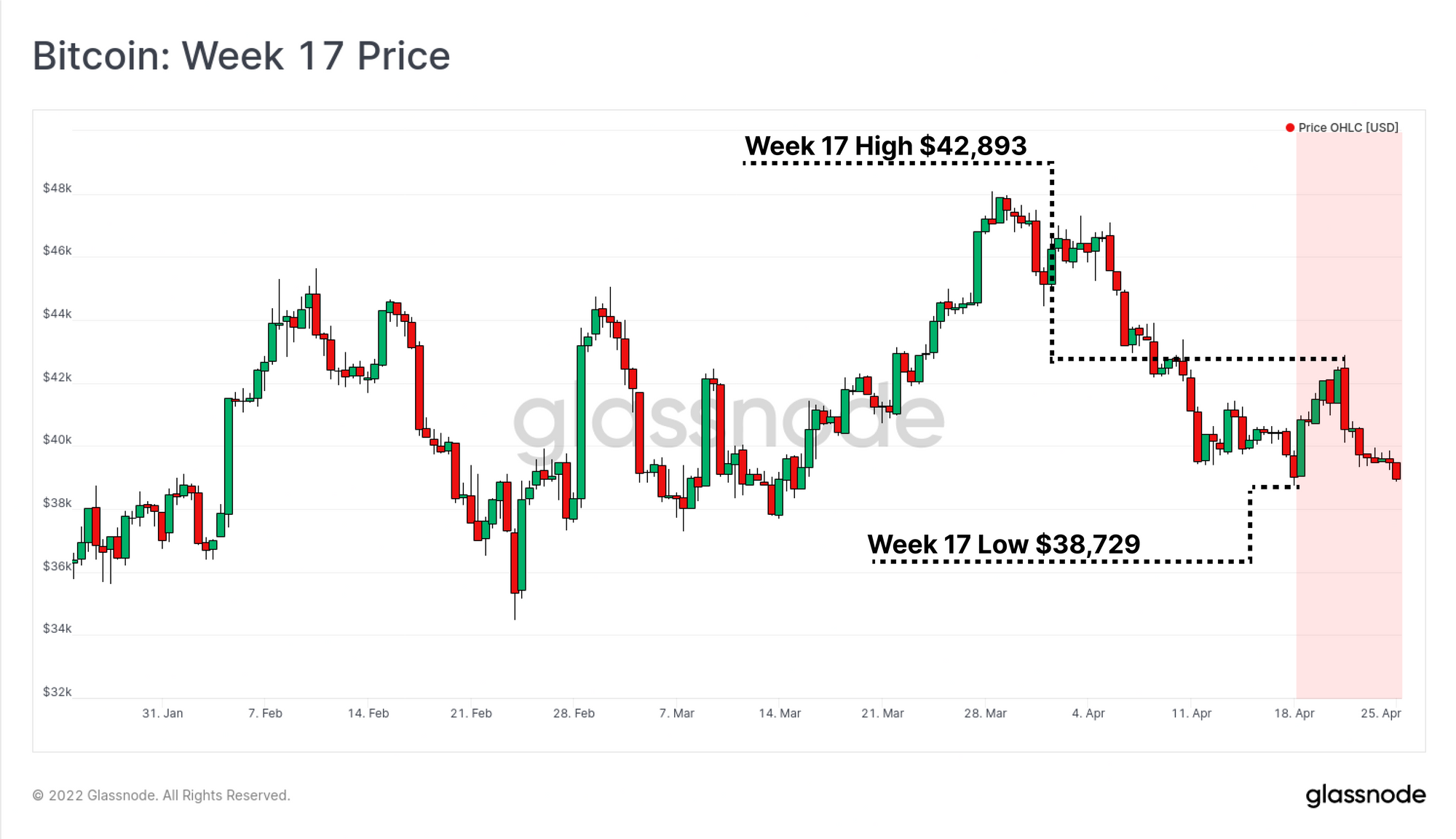The Growing Dominance of Perpetual Swaps
Yields, implied volatility and trading volume in Bitcoin derivatives markets continue to compress, leading to an aggregate decline in capital inflows. On-chain volumes also remain muted, however, more constructive medium to long term fundamental trends are starting to develop.

Volatility and trading volume continues to compress across the Bitcoin market, as prices remain bound within the $38k to $42k consolidation range. Market prices weakened slightly again this week, trading off a high of $42,893, and losing ground at a weekly low of $38,729.
The market has now traded within an increasingly tight price range for almost three months, leading to historically low yields available in futures markets cash-and-carry trades, alongside a persistent decline in trade volumes. Implied volatility priced into options markets has also broken below 60% this week, which is significantly lower than the 80%+ volatility that characterised much of 2021. Furthermore, transaction volumes on-chain remain muted, albeit with a growing trend of high value ($10M+) transactions, and a macro decline in volumes associated with exchange inflows and outflows.
In this edition, we will focus on a number of these big picture trends that are developing in Bitcoin markets, including:
- Compressing trade volumes, low implied options volatility, and rolling basis yields persistently below 3% in futures markets. All are leading to a leaking of capital out of Bitcoin markets as investors seek higher returns elsewhere.
- The dominance of perpetual futures markets continues to grow, as these instruments have clearly become the preferred source of leverage.
- Declining on-chain settlement volume, however with a growing dominance of large size transactions ($10M+).
- Cyclical divergence between exchange related inflow/outflow volume, and total transaction volume. This accompanies a potential shift in momentum with respect to network utilisation, and provides a potentially constructive reversal in the fundamentally implied valuation for Bitcoin.


